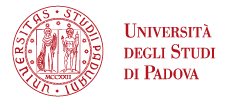PRIN 2022 / Lot

Acronimo: Green Co-Driver
Titolo: The Green Co-Driver, a human-interactive self-driving system that improves the energy efficiency of road vehicles
Coordinatore: prof. Roberto LOT - Dipartimento di Ingegneria Industriale-Università degli Studi di PADOVA
Partner-Unità di ricerca: Politecnico di MILANO; Università degli Studi di TRENTO
Bando: PRIN 2022 - Decreto Direttoriale n. 104 del 02-02-2022
Durata: 28/09/2023 – 27/09/2025 (24 mesi)
Budget totale progetto: € 258.800,00
Abstract del progetto
The main goal of this project is improving the energy efficiency of Connected and Autonomous Road Vehicles with innovative interactions between the vehicle and human driver.
Energy efficient driving, eco-driving in short, requires, for example, gentle acceleration and avoiding braking by anticipating traffic flow. These behaviours require substantial anticipation, which in turn increases the driver’s workload, and also increases travel time. For these reasons, driver’s acceptance of eco-driving is often poor. To increase user acceptance while maintaining driving efficiency, we will realise and demonstrate a Green Interactive Self-Driving System (Green Co-Driver) that:
a) Ensures driving safety first.
b) Maximises energy saving whenever possible.
c) Self-adapts to human preferences in real time, trading energy efficiency for user satisfaction in an optimal way.
Autonomous driving vehicles, as outlined by the SAE automation levels, split the driving responsibilities and assign some to the human and some to the self-driving vehicle. SAE automation levels do not foresee collaboration between human and vehicle on the same authority level, which is instead a typical characteristic of other types of advanced human-machine interaction. For example, the rider-horse collaboration is a metaphor that was used as a model for pilot-aeroplane joint control, and more recently for driver-vehicle interaction as an enrichment of the SAE scheme. The strength of this interaction model is that the rider's actions are not directly executed, but mapped by the horse onto the affordable actions of the environment. Hence the horse filters the human requests, and in particular executes requests (or adapt them) that are feasible and safe. We will extend this scheme to interactive green driving: a self-driving vehicle (horse), may receive human driving requests (e.g., move to a faster lane or try to be faster) and adapt its behaviour to comply with human wishes, while complying with absolute safety and remaining as energy efficient as possible (whenever necessary the horse will sacrifice human wishes and energy economy for safety).
This research project will combine green-driving functions developed by UniPD with the self-driving agent developed by UniTN into a novel agent capable of complying with human wishes in the greenest possible way and without conflicts with safety. The agent will be implemented in two driving simulators (UniTN static simulator and POLIMI dynamic simulator), which will be used to assess the Green Co-Driver in a safe and controlled environment.





